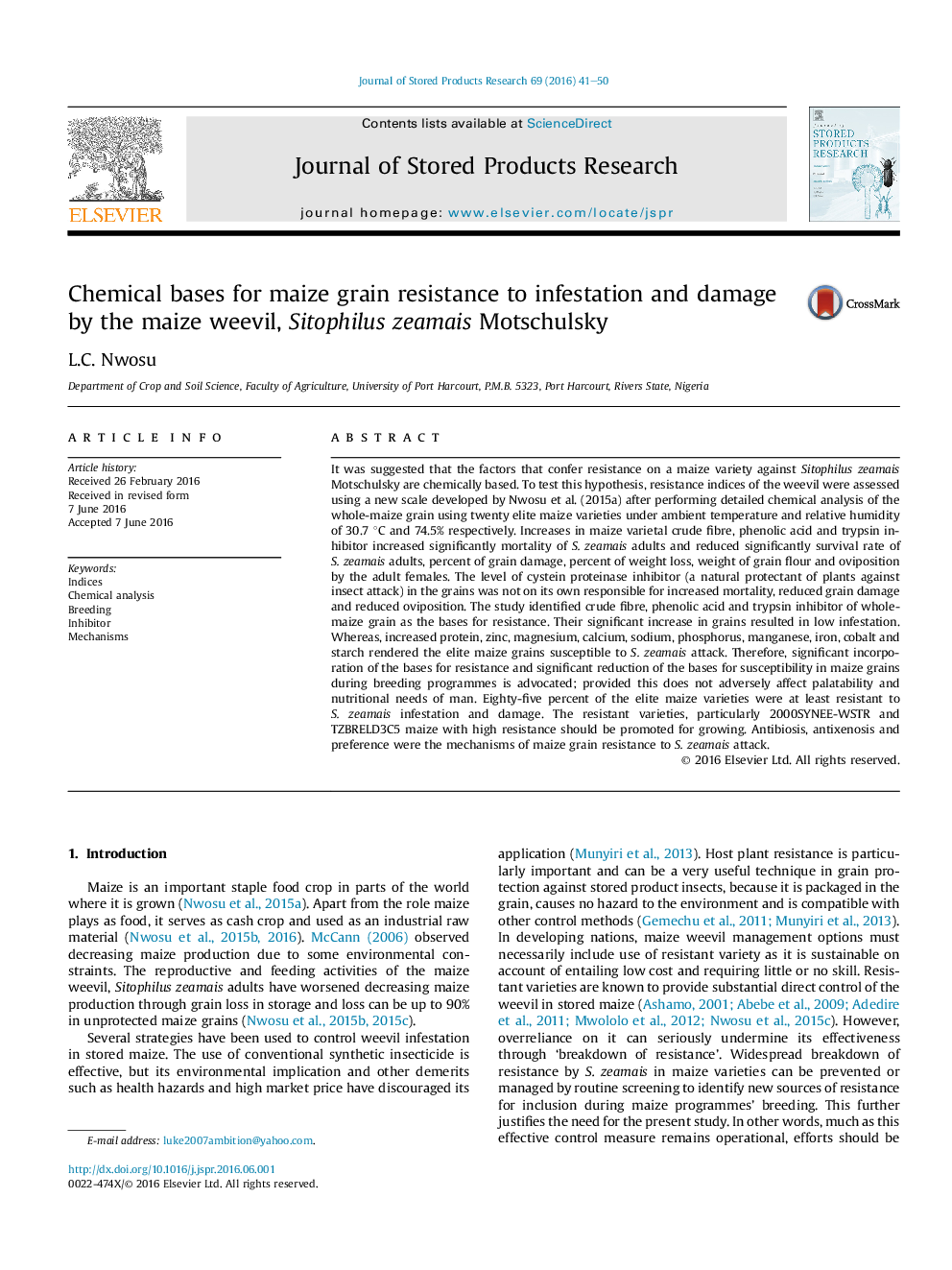| کد مقاله | کد نشریه | سال انتشار | مقاله انگلیسی | نسخه تمام متن |
|---|---|---|---|---|
| 6378295 | 1624920 | 2016 | 10 صفحه PDF | دانلود رایگان |
عنوان انگلیسی مقاله ISI
Chemical bases for maize grain resistance to infestation and damage by the maize weevil, Sitophilus zeamais Motschulsky
دانلود مقاله + سفارش ترجمه
دانلود مقاله ISI انگلیسی
رایگان برای ایرانیان
کلمات کلیدی
موضوعات مرتبط
علوم زیستی و بیوفناوری
علوم کشاورزی و بیولوژیک
علوم زراعت و اصلاح نباتات
پیش نمایش صفحه اول مقاله

چکیده انگلیسی
It was suggested that the factors that confer resistance on a maize variety against Sitophilus zeamais Motschulsky are chemically based. To test this hypothesis, resistance indices of the weevil were assessed using a new scale developed by Nwosu et al. (2015a) after performing detailed chemical analysis of the whole-maize grain using twenty elite maize varieties under ambient temperature and relative humidity of 30.7 °C and 74.5% respectively. Increases in maize varietal crude fibre, phenolic acid and trypsin inhibitor increased significantly mortality of S. zeamais adults and reduced significantly survival rate of S. zeamais adults, percent of grain damage, percent of weight loss, weight of grain flour and oviposition by the adult females. The level of cystein proteinase inhibitor (a natural protectant of plants against insect attack) in the grains was not on its own responsible for increased mortality, reduced grain damage and reduced oviposition. The study identified crude fibre, phenolic acid and trypsin inhibitor of whole-maize grain as the bases for resistance. Their significant increase in grains resulted in low infestation. Whereas, increased protein, zinc, magnesium, calcium, sodium, phosphorus, manganese, iron, cobalt and starch rendered the elite maize grains susceptible to S. zeamais attack. Therefore, significant incorporation of the bases for resistance and significant reduction of the bases for susceptibility in maize grains during breeding programmes is advocated; provided this does not adversely affect palatability and nutritional needs of man. Eighty-five percent of the elite maize varieties were at least resistant to S. zeamais infestation and damage. The resistant varieties, particularly 2000SYNEE-WSTR and TZBRELD3C5 maize with high resistance should be promoted for growing. Antibiosis, antixenosis and preference were the mechanisms of maize grain resistance to S. zeamais attack.
ناشر
Database: Elsevier - ScienceDirect (ساینس دایرکت)
Journal: Journal of Stored Products Research - Volume 69, October 2016, Pages 41-50
Journal: Journal of Stored Products Research - Volume 69, October 2016, Pages 41-50
نویسندگان
L.C. Nwosu,